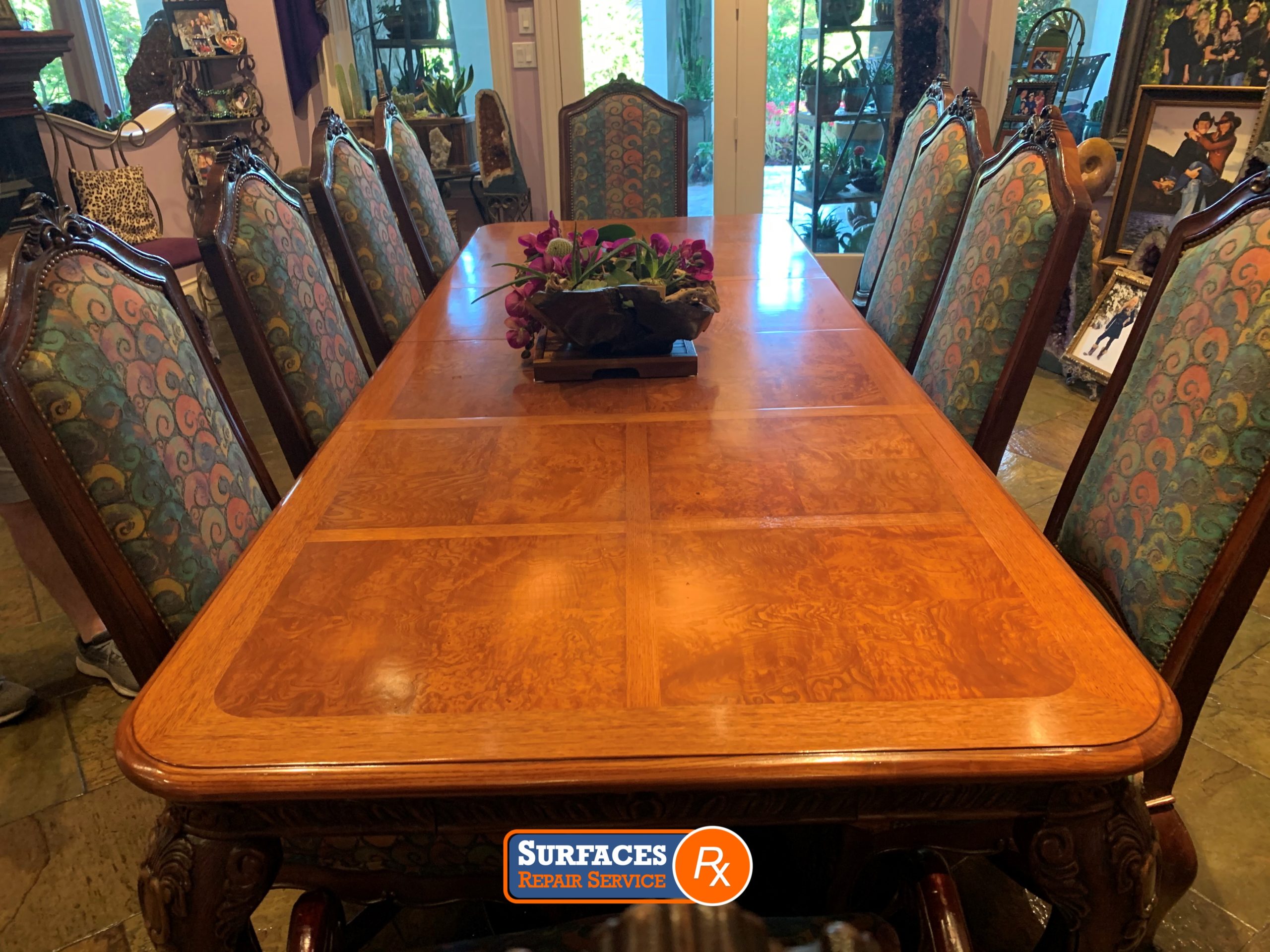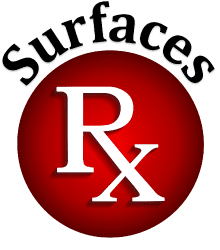
When it comes to furniture refinishing, tabletop refinishing can be one of the hardest. Why? Because the work has to be perfect. The tabletop reflects light, and that highlights every flaw there is on the tabletop.
The main culprit is dust. It's everywhere. It rains down from attics, air conditioning vents, and even from walking around the work area. So the first thing that you have do is minimize the dust because dust floating around can ruin the best wood finisher's work. When it lands on a recently applied wet coat, it can create bumps in the cured finish.

Depending on whether the tabletop is solid wood or a veneer determines the sanding process. Veneers are thin and usually require hand-sanding so that the grain is not damaged, and we don't sand through to the surface and expose the less expensive layer, typically plywood. If the top is solid, we can use a random orbital sander first and then sand it by hand to remove any swirls created by the orbital sander.
Another factor is the species of wood. Some species like cherry, birch, maple, and pine don't absorb stain evenly and need a pre-conditioner.
Before staining, it is critical to ensure that there are no cross-grain scratches or swirls as the stain will make them stain out.
The next step is applying the right sheen for the customer. The choices are matte, satin, semi-gloss, and gloss. Owners have the choice of finishes ranging from waxes, oils, varnishes, shellac, lacquer, polyethylene, and water-based finishes. Each has different degrees of protection, durability, ease of application, reparability, and aesthetics.
There are two types of finishes, evaporative and reactive. Finishes that dry or cure to a hard finish are evaporative and include lacquer, shellac, and waterborne finishes. Oils, oil-based finishes, catalyzed lacquers, and varnishes are reactive finishes because they cure by reacting with another chemical like air or are placed in the can before application.
Reactive finishes are more durable than evaporative finishes. Oil-based polyurethane is the most durable finish that you can apply by hand, while catalyzed lacquers and varnishes need a spray application.
What is the best finish to use?
Oil-based polyurethane is best if we apply by hand, where catalyzed varnish and lacquer if we are spraying. Water-based finishes are almost as durable but do not have the oil-based finishes' warmth and depth.
Oil-based poly or varnish are good choices for kitchens, bathrooms, and floors. Lacquer, shellac, oil, or oil-varnish blends are best for fine furniture like formal dining room tables. They dry quickly are durable.
Sound complicated? It is. For the best dining room table refinishing call Surfaces Rx today. (972) 850-5055
